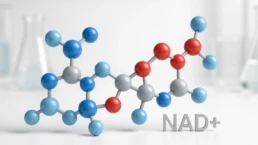In the realm of pediatric medicine, one area that demands close attention is pediatric neurology. Children’s neurological health is of paramount importance, and understanding common neurological disorders in children, along with their symptoms and treatments, is crucial for parents and healthcare providers.
Table of Contents
ToggleMost Common Neurological Disorder
Another frequently encountered neurological disorder in children is known as “Tourette’s Syndrome.” While it may not be as widely acknowledged as conditions such as epilepsy or cerebral palsy, Tourette’s Syndrome stands as one of the prevalent neurological disorders affecting children. This disorder is defined by repetitive, sudden, and involuntary tics, which may manifest as both motor and vocal expressions. Although tics typically originate in childhood, their intensity and duration can significantly differ from one individual to another. While a definitive cure for Tourette’s Syndrome remains elusive, many children experience symptom improvement during adolescence, and there are numerous interventions available to manage this condition effectively.
Neurological Disorder in Children
Understanding the Neurological Disorder in Children is crucial for early recognition and intervention. Some of the key syndromes and their primary characteristics include:
Seizure Disorders: Seizure disorders, such as epilepsy, involve recurrent seizures triggered by abnormal electrical activity in the brain. Seizures can vary from brief lapses of attention to full-blown convulsions.
Developmental Disorders: These disorders encompass a wide range of conditions that affect a child’s ability to learn, communicate, and function. Autism spectrum disorders and attention-deficit/hyperactivity disorder (ADHD) fall under this category.
Movement Disorders: Conditions like cerebral palsy result in difficulties with movement, muscle tone, and posture. These disorders can impact a child’s physical development and coordination.
Migraine and Headache Disorders: Children are not immune to migraines and other headache disorders, which can lead to severe and recurrent head pain along with other symptoms like nausea and sensitivity to light and sound.
Neuromuscular Disorders: These disorders involve damage to or dysfunction of the muscles and nerves that control movement. Muscular dystrophy is an example of a neuromuscular disorder.
Behavioral and Emotional Disorders: Conditions like anxiety, depression, and conduct disorders can have neurological components and significantly impact a child’s emotional and behavioral well-being.
The Most Common Pediatric Neurological Disorders
Epilepsy: Epilepsy is perhaps one of the most well-known neurological disorders in children. It is characterized by recurrent seizures, which can vary in intensity and symptoms. These seizures are a result of abnormal electrical activity in the brain. While epilepsy is a lifelong condition, with the right treatment and management, many children with epilepsy can lead fulfilling lives.
Cerebral Palsy: Cerebral palsy is another prevalent neurological disorder in children, affecting a child’s motor skills and muscle movement. It often develops before birth or during early infancy due to damage to the developing brain. Early intervention, therapy, and support can significantly improve the quality of life for children with cerebral palsy.
Autism Spectrum Disorder (ASD): Autism is a neurodevelopmental disorder characterized by challenges in social interaction, communication, and repetitive behaviors. While it’s a lifelong condition, early diagnosis and appropriate interventions, such as behavioral therapy, can help children with autism thrive.
Attention-Deficit/Hyperactivity Disorder (ADHD): ADHD is a neurological disorder that can affect a child’s ability to focus, control impulses, and stay organized. It’s one of the most common neurodevelopmental disorders in children. Treatment may involve behavioral therapy, medication, or a combination of both.
Migraines: Migraine headaches are not exclusive to adults. Children can also experience migraines, which are a type of neurological disorder. They can cause severe, recurrent headaches along with other symptoms like nausea and sensitivity to light and sound. Identifying triggers and implementing lifestyle changes can help manage migraines in children.
Neurological Disorder Symptoms and Treatments
Each of these neurological disorders presents with its unique set of symptoms. For example, epilepsy may manifest as seizures, while cerebral palsy can lead to muscle stiffness and poor coordination. Recognizing these symptoms is essential for timely intervention and treatment.
The treatment for common neurological disorders in children varies. In many cases, a multidisciplinary approach is necessary, involving pediatric neurologists, physical therapists, occupational therapists, speech therapists, and special education experts. Medications may be prescribed when appropriate, and behavioral therapies can be an integral part of the treatment plan.
Early Diagnosis and Timely Intervention
The key to effective management of these common neurological disorders in children is early diagnosis and timely intervention. Parents and caregivers should stay vigilant for signs or symptoms that indicate a neurological disorder. Any concerns should be discussed with healthcare professionals, and if necessary, a pediatric neurologist should be consulted. Early diagnosis allows for the development of personalized treatment plans tailored to the child’s specific needs.
Holistic Approach to Treatment
The treatment of common neurological disorders in children often requires a comprehensive and multidisciplinary approach. I may involve pediatric neurologists, physical therapists, occupational therapists, speech therapists, and special education experts. Medications may be prescribed when appropriate, but behavioral therapies play a significant role in improving a child’s quality of life. Early intervention services, such as speech and language therapy or physical therapy, can address specific challenges associated with the disorder.
Supporting Children and Families
In conclusion, understanding common neurological disorders in children, recognizing their symptoms, and ensuring early diagnosis and intervention are vital steps toward helping children thrive. The support provided to children and their families through the journey of coping with these disorders is instrumental in their overall well-being and development.
To explore more about neurological disorders in children, their symptoms, and treatment options, you can refer to this valuable resource.
Knowledge, compassion, and access to professional care ensure that children with neurological disorders are well-equipped to face life’s challenges and reach their full potential. It’s essential to promote awareness and understanding to support these young individuals and their families better.
What is Pediatric Neurology?
Pediatric neurology is a specialized branch of medicine that deals with the diagnosis and treatment of neurological disorders in children. These disorders can affect the brain, spinal cord, nerves, and muscles of young patients. While various neurological disorders can affect children, some are more common than others.
The Importance of Early Diagnosis
Early diagnosis of neurological disorders in children is vital. It allows for prompt intervention and support, significantly improving a child’s quality of life. Parents and caregivers play a crucial role in observing and reporting any unusual behaviors or symptoms in children. If there are concerns, seeking consultation with a pediatric neurologist is a wise step.
In Conclusion
Understanding common neurological disorders in children, their symptoms, and available treatments is essential for parents, caregivers, and healthcare professionals. Pediatric neurology is a field dedicated to providing the best care and support to children facing these challenges. With early diagnosis and appropriate interventions, children with neurological disorders can lead fulfilling lives and reach their full potential.
To delve deeper into the subject of neurological disorders in children, you can refer to this informative resource.
Knowledge, vigilance, and access to professional care are the pillars of support for children with neurological disorders, ensuring that they grow, learn, and thrive.

This article is medically reviewed by Dr. Chandril Chugh, Board-Certified Neurologist, providing expert insights and reliable health information.
Dr. Chandril Chugh is a U.S.-trained neurologist with over a decade of experience. Known for his compassionate care, he specializes in treating neurological conditions such as migraines, epilepsy, and Parkinson’s disease. Dr. Chugh is highly regarded for his patient-centered approach and dedication to providing personalized care.








